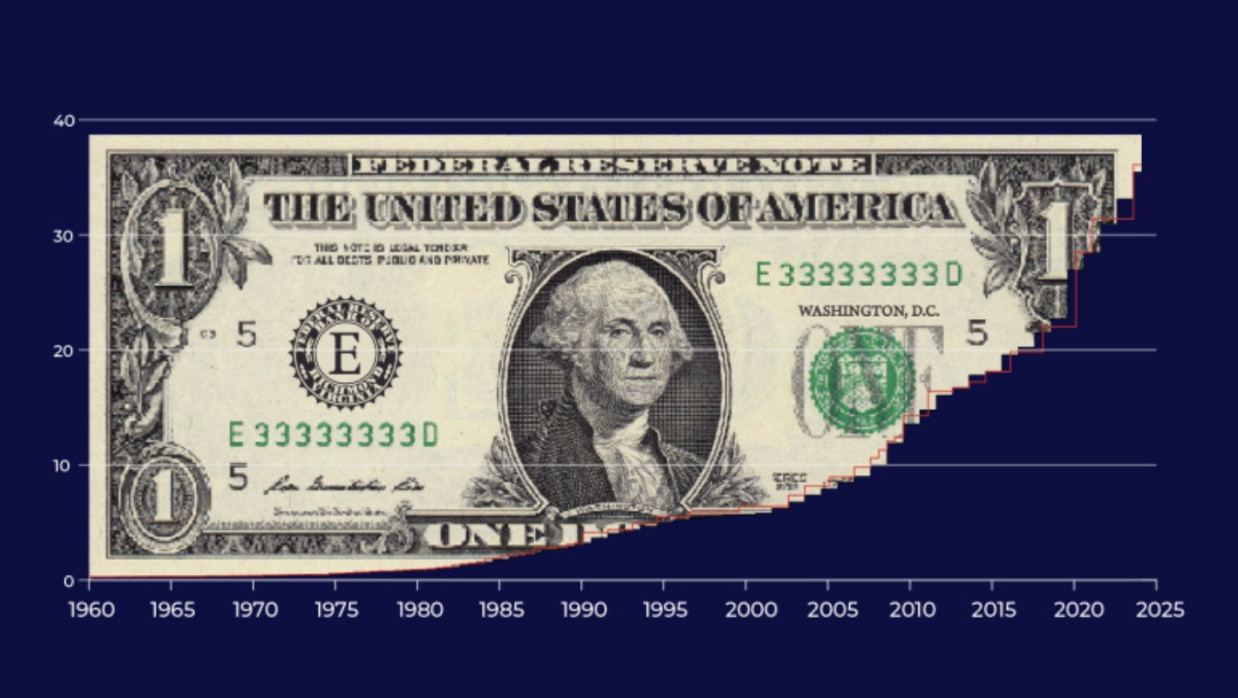U.S. National Debt Hits $36 Trillion: What It Means and Who Holds It

The United States’ national debt has surged to an unprecedented $36.2 trillion, reigniting concerns about the country’s long-term economic health and global financial stability. With a key congressional committee recently advancing former President Donald Trump’s tax cut extension - a move that could add up to $5 trillion more to the debt — analysts and credit agencies are sounding alarms.
Understanding U.S. Debt
National debt is the total amount the U.S. government owes its creditors. Currently equivalent to 122% of the country's Gross Domestic Product (GDP), the debt is growing at a rate of nearly $1 trillion every three months. While the highest debt-to-GDP ratio was seen during the 2020 COVID-19 pandemic at 133%, the current trend remains deeply troubling.
Why the Debt Keeps Rising
The U.S. borrows to cover its budget deficit — the gap between what it spends and what it collects in revenue. To regulate this borrowing, Congress imposes a "debt ceiling." However, this ceiling has been raised or altered 78 times since 1960, enabling continued borrowing.
The federal deficit spiked under Trump’s presidency, especially in 2020, when pandemic-related spending skyrocketed while tax revenues fell. In contrast, during Bill Clinton’s presidency, the U.S. ran a surplus, helped by a booming tech economy and increased tax revenues.
How the U.S. Borrows: Treasury Securities
To finance its debt, the U.S. Treasury issues securities like Treasury bills (T-bills), notes (T-notes), and bonds (T-bonds). These function as loans from investors to the government, which promises repayment with interest over time.
- T-bills mature in less than a year
- T-notes mature in 2–10 years
- T-bonds mature in 20–30 years
These instruments are traditionally seen as low-risk and are a cornerstone of global financial markets.
Who Owns America’s Debt?
Roughly 75% of U.S. debt is held domestically:
- $15.16 trillion is owned by U.S. private investors, mutual and pension funds.
- $7.36 trillion is held by U.S. government agencies and trust funds.
- $4.63 trillion is held by the Federal Reserve.
One notable private holder is Warren Buffett’s Berkshire Hathaway, which owns $314 billion in U.S. Treasury bills — the largest non-governmental stake.
The remaining 25%, or $9.05 trillion, is held by foreign entities. This marks a significant rise from just 5% in 1970.
Top Foreign Holders of U.S. Debt
- Japan: $1.13 trillion
- United Kingdom: $779.3 billion (recently surpassed China)
- China: $765.4 billion
- Cayman Islands: $455.3 billion
- Canada: $426.2 billion
Both Japan and China have hinted at leveraging their U.S. debt holdings during trade negotiations. Japan’s Finance Minister recently called its debt portfolio a potential bargaining “card,” while China continues to reduce its holdings amid ongoing trade tensions.
What High Debt Means for Americans
As debt interest payments grow, they consume a larger share of the federal budget, potentially reducing funds available for public services. This could lead to higher taxes and increased interest rates, raising the cost of living for everyday Americans through more expensive loans and mortgages.
With the debt now surpassing the size of the entire U.S. economy, policymakers face mounting pressure to address structural deficits, balance spending priorities, and prevent further erosion of investor confidence.
Source: Al Jazeera












